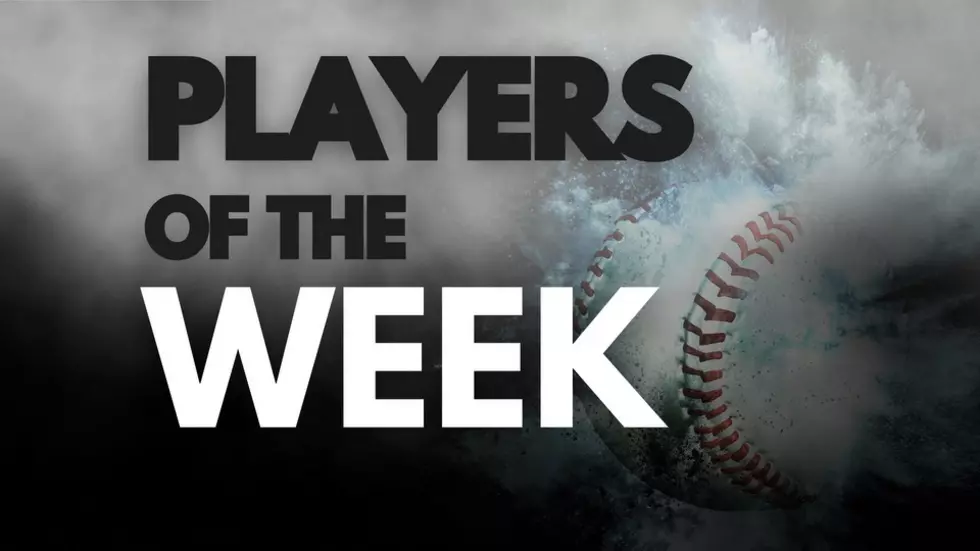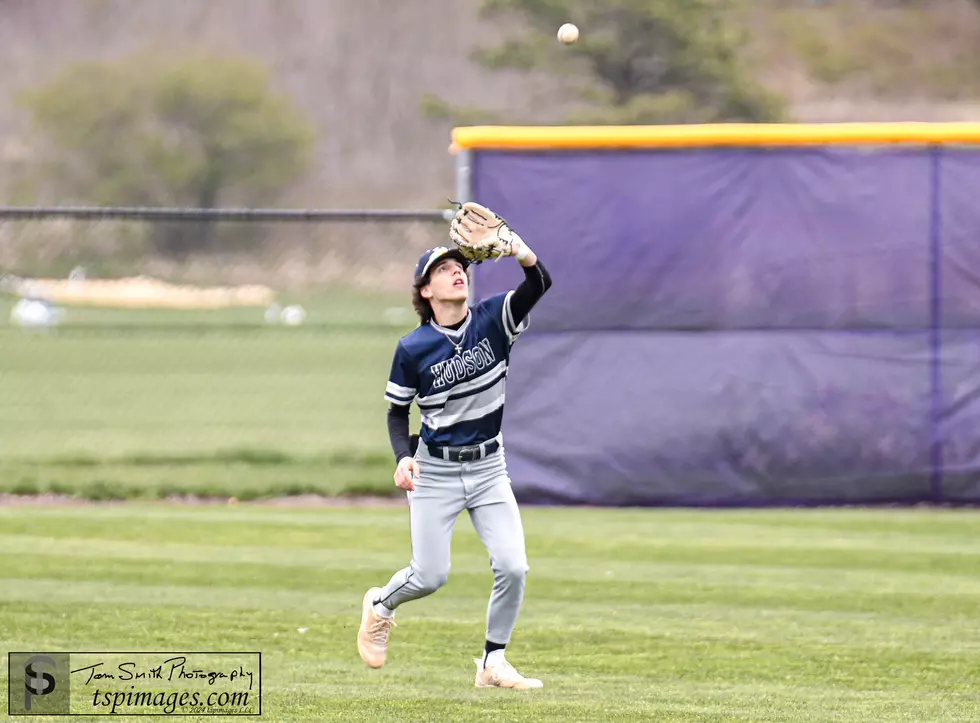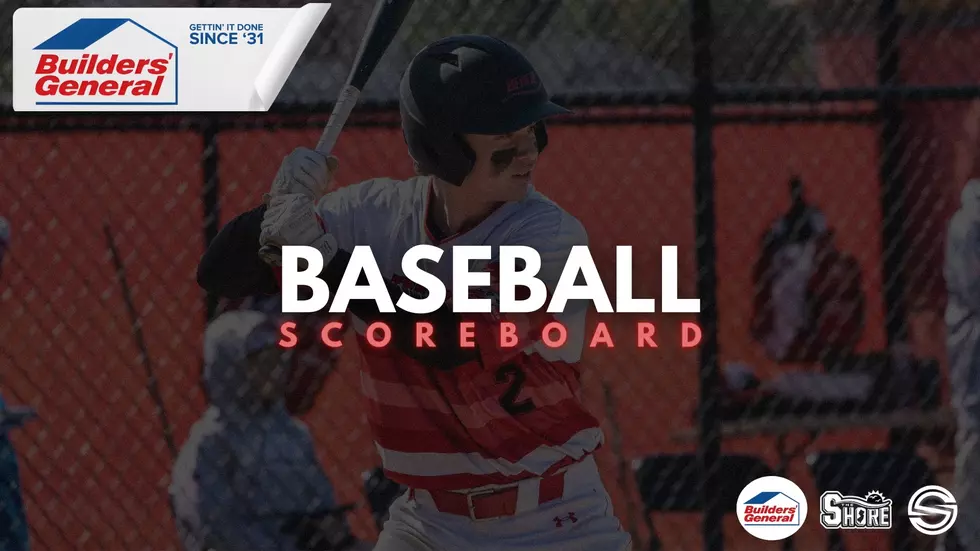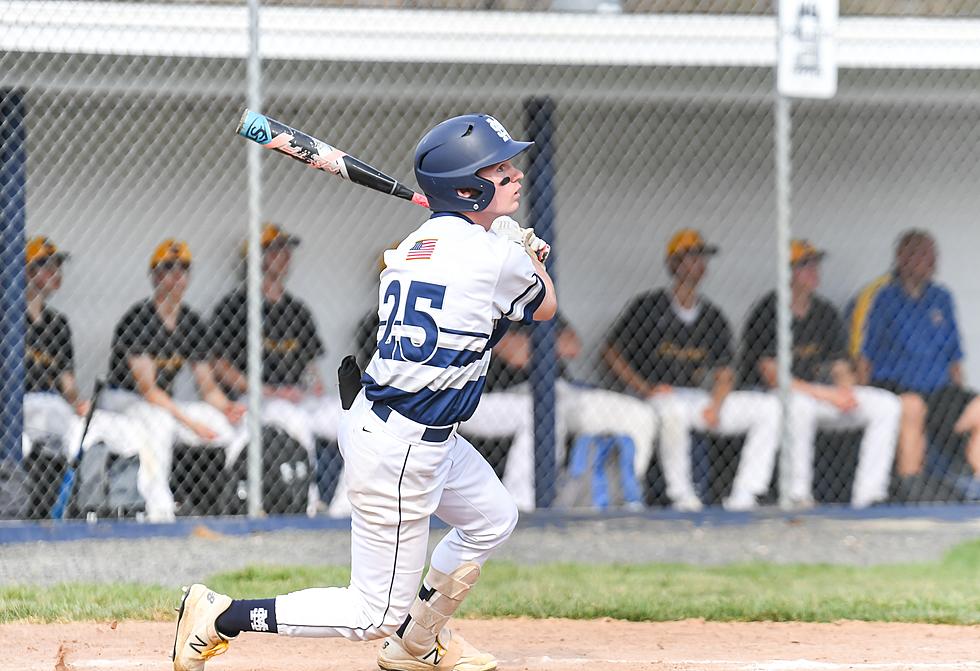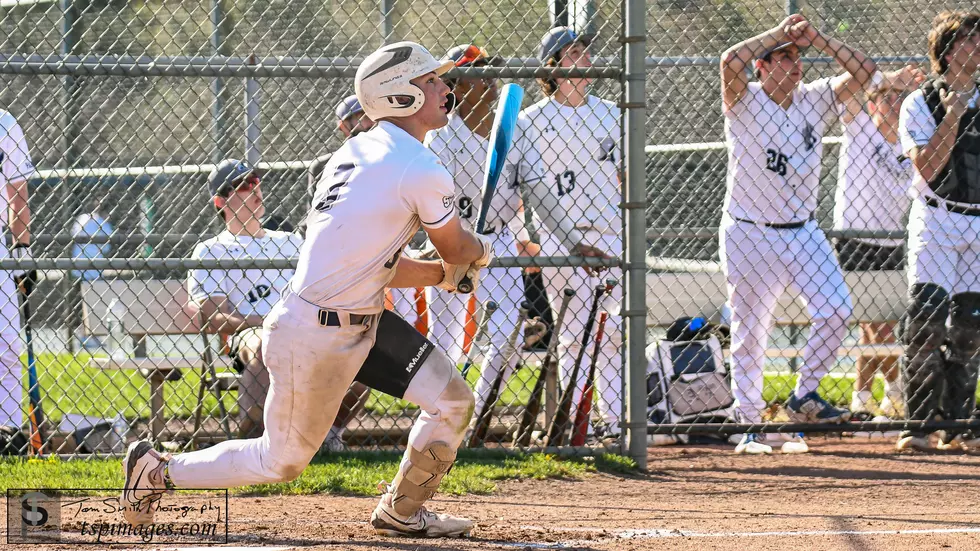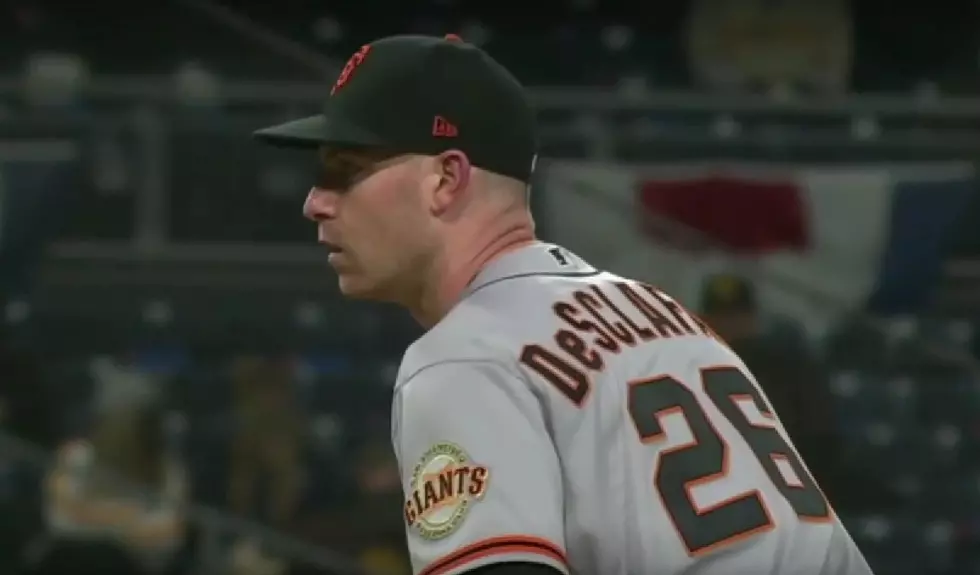
Change of Scenery: Is Former Colts Neck, NJ Baseball Star Anthony DeSclafani the Giants’ Latest Diamond in the Rough?

In the offseason between the 2019 and 2020 seasons, the San Francisco Giants plucked former No. 4 overall pick Kevin Gausman off the scrapheap and helped him turn into the legitimate top-of-the-rotation pitcher that so many expected him to become when he debuted with the Baltimore Orioles.
So that begged the question: who would be the Giants’ next project?
Under president of baseball operations Farhan Zaidi, the Giants have dove head-first into an analytics-based approach after years as one of last remaining old-school clubs that won three championships in five years under former team president Brian Sabean and manager Bruce Bochy but fell on hard times since 2017. While Zaidi’s team continues to overhaul a rapidly-improving farm system, the focus at the big league level is to find overlooked and forgotten talent, sign them to short contracts and help them turn their careers around.
For the 2021 season, the Giants brought in three free-agent starters on a Major League contracts and one was a name familiar to the Jersey Shore baseball community. For its next trick, the Giants will attempt to make Anthony DeSclafani a star on the mound.
Now approaching his 31st birthday later this month, DeSclafani – a Colts Neck High School graduate and University of Florida alumnus – is in his seventh Major League season and the Giants are his fourth stop since being drafted by the Toronto Blue Jays in the sixth round of the 2011 First-Year Player Draft. He debuted with the Miami Marlins in 2014 before being traded to the Cincinnati after his first season in the Majors.
In five seasons with the Reds, DeSclafani seemed on the cusp of breaking through as a mid-rotation starter but never quite got over the hump, with an injury being the primary culprit. He missed the entire 2017 season with an elbow issue but still rounded into form for a strong 2019 in which DeSclafani posted a 3.89 ERA in 166 innings over 31 starts, with career highs in strikeouts (167), strikeouts-per-nine-innings (9.02), strikeout percentage (24 percent) and opponents’ batting average (.235).
DeSclafani hoped to ride that momentum into his final season before hitting free agency, but the COVID-19 pandemic pushed the start the 2020 campaign. He opened with two impressive, scoreless outings (11 innings, five hits, one walk, eight strikeouts) but his season unraveled over the next five starts (18 2/3 innings, 11.57 ERA, 15 walks, 14 strikeouts).
Five bad starts were hardly enough to deter the Giants, who locked up DeSclafani with a one-year, $6 million contract during the past offseason. Although his 7.22 ERA, 6.68 strikeouts-per-nine innings and 4.28 walks-per-nine were career-worsts, DeSclafani’s average fastball velocity was higher than it has ever been at just a tick under 95 miles-per-hour.
While DeSclafani’s improving velocity might have been a selling point, turning the fastball loose has not been the Giants’ plan for DeSclafani – at least not through one start. The numbers in a 3-2 win over the Padres were solid, especially considering it was against one of the best rosters in the Majors: five innings, one earned run, four hits, three walks, four strikeouts and 47 of 86 pitches for strikes.
The most noteworthy of DeSclafani’s pitches had little to do with him, but rather what he did to Fernando Tatis Jr. – one of baseball’s most electric talents to debut in the last 25 years – with a 2-2 breaking ball. Tatis would leave the game in pain with a left shoulder injury.
All-in-all, it was an encouraging Giants debut for DeSclafani. Couple the Monday performance with a strong showing during the spring (12 strikeouts and three walks in 9 2/3 innings, 2.79 ERA) and it appears the Giants and DeSclafani have come up with a plan for this season. Let’s dig into the numbers and see what comes up.
Anthony DeSclafani Career Pitch Use through 2020
Fastball: 58.8%
Slider: 27.1%
Curveball: 9%
Changeup: 5.1%
Pitch Use vs. San Diego on April 5
Fastball: 44.2%
Slider: 31.4%
Curveball: 11.6%
Changeup: 12.8%
Based on start No. 1 with the Giants, DeSclafani will be looking to lean on his secondary pitches more, and relative to his usual pitch mix, he went especially heavy with his changeup. This is only one game, however, and DeSclafani has had a number of outings in his career in which he has thrown an even higher percentage of changeups. While there is a good chance DeSclafani will be throwing more changeups and fewer fastballs, that’s not a conclusion that can be drawn after one 86-pitch start.
There is, however, something that might be happening for DeSclafani that suggests he is on to something with the changeup. While it wasn’t particularly effective in his first start – eight of the 11 he threw were balls, one resulted in a foul ball, one a ground out and one a swing-and-miss – the pitch profiles differently than the changeup he featured in Cincinnati. Take a look:
DeSclafani’s Changeup by Season Since 2018
| Season | Avg. Velocity | Vertical Drop | % vs. Avg. | Horizontal Break | % vs. Avg. |
|---|---|---|---|---|---|
| 2018 | 88.4 MPH | 28.3 IN | -2 % | 13.9 IN | -2 % |
| 2019 | 88.5 MPH | 28.2 IN | -1 % | 13.7 IN | -5 % |
| 2020 | 88.5 MPH | 29 IN | -3 % | 14.8 IN | 6 % |
| 2021 | 89.5 MPH | 28.3 IN | 0 % | 18.8 IN | 17 % |
Source: Baseball Savant
Note to the reader: The percentage of movement listed on the chart is the product of comparing the movement of the pitch in question to other pitches thrown with a similar velocity, extension and release (a slower pitch drops more due to gravity and release point effects the horizontal movement).
At least for one start, DeSclafani showed off a harder changeup that moves a good deal more than the older version of the pitch. The movement on the pitch was basically league average over the past three seasons but the changeup DeSclafani threw against the Padres to open up his season profiles as a potential weapon – particularly against left-handed hitters, who had on-base (.331 to .257) and slugging (.464 to .361) percentages close to 80 points better than right-handers did vs. DeSclafani during that strong 2019 season for the right-hander.
The best execution of the pitch by DeSclafani came vs. Eric Hosmer in the bottom of the fifth, when he struck out the Padres’ clean-up hitter on three pitches. Here is the 0-1 changeup DeSclafani threw Hosmer, both at real speed and in slow-motion.
(Links to both GIFs in case they are slow to load: GIF 1; GIF 2)
For a little more context, watch how DeSclafani mixed it between two mid-90’s fastballs to set Hosmer up for the punchout (link to GIF).
For even more context, it might help to compare which changeups around baseball look similar to the one DeSclafani showed in San Diego. Here are some of the starting pitchers with similar changeup profiles from 2020.
| Pitcher | Avg. Velocity | Vertical Drop | % vs. Avg. | Horizontal Break | % vs. Avg. |
|---|---|---|---|---|---|
| Sandy Alcantara | 90.1 MPH | 29.7 IN | 7 % | 16.4 IN | 17 % |
| DeSclafani (2021) | 89.5 MPH | 28.3 IN | 0 % | 18.8 IN | 17 % |
| Sixto Sanchez | 89 MPH | 31.1 IN | 5 % | 17.1 IN | 19 % |
| Shane Bieber | 88.7 MPH | 29.9 IN | 3 % | 15.9 IN | 15 % |
| Kyle Wright | 87.7 MPH | 29 IN | -2 % | 15.6 IN | 13 % |
| Merrill Kelly | 87.5 MPH | 29.2 IN | -2 % | 16.4 IN | 20 % |
| Jesus Luzardo | 87.4 MPH | 31 IN | -1 % | 17.1 IN | 17 % |
| Pablo Lopez | 87.2 MPH | 33 IN | 9 % | 16.7 IN | 24 % |
| Brandon Woodruff | 86.7 MPH | 26.9 IN | -9 % | 15.4 IN | 17 % |
| Lance McCullers Jr. | 86.3 MPH | 35.2 IN | 12% | 16.6 IN | 17 % |
By relative movement, the best changeups in the group belong to the three Marlins starters – Lopez, Alcantara and Sanchez – with McCullers in the mix as well. DeSclafani doesn’t quite measure up to those four because of a more modest drop to his changeup, but his new changeup is pretty similar to that of reigning American League Cy Young winner Shane Bieber. He is probably most similar to Arizona Diamondbacks right-hander Merrill Kelly and Oakland Athletics left-hander Jesus Luzardo, which is noteworthy considering Luzardo’s changeup was considered a plus pitch during his emergence as a top prospect.
This is not to say DeSclafani now has a changeup as good as the ones that every pitcher on this list throws. The 2021 season is just approaching one-week old and DeSclafani still has to show he can command the pitch well enough for it to be the weapon he and the Giants hope it can be.
With that being said, DeSclafani has shown good control during his career (6.7 percent career walk rate), he has been prioritizing his changeup for several years now and even in a forgettable 2020, the progression of his changeup was a silver lining. Now with the Giants – a team that helped Gausman reach his ceiling by encouraging him to go heavy on his devastating split-change and to also throw his third offering (the slider) a little more often – seemingly buying into DeSclafani’s upside as a breakout candidate, it’s becoming clear what the formula might be for the former Colts Neck star to have his best Big League season.
More From Shore Sports Network
